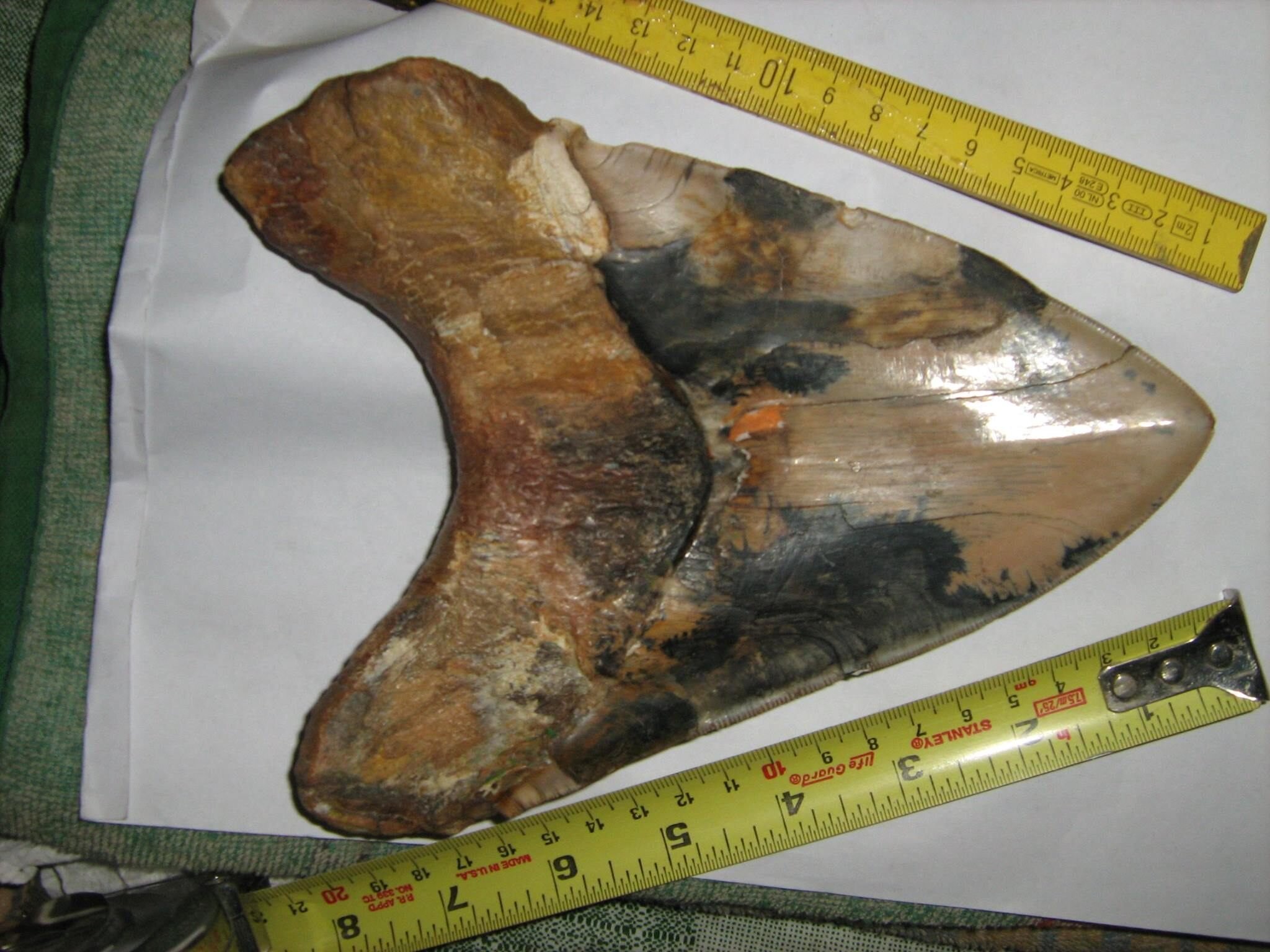Ever since Steven Spielberg ruined the ocean for an entire generation in 1975, sharks have reserved a spot in the darkest parts of our imagination. They even made some people think twice about jumping in the pool. Sharks are indisputably one of nature’s impeccable hunters and have dominated the food chain for ages. They inspire feelings of fear, awe, and respect and rightfully so. However, what’s truly horrifying is that the sharks reigning over our oceans today pale in comparison to one of their prehistoric ancestors. The megalodon was one of the deadliest predators to ever exist on earth, let alone the ocean.
The Meg
The carcharocles megalodon terrorized the planet’s oceans from the early Miocene to the Pliocene epoch (3.6-23 million years ago). The sharks were born about 7 feet in length and typically ranged between 30-40 feet once they reached full adulthood. The largest of these gargantuan predators could reach 60 feet in length and weigh up to 100 tons.
That type of size warrants a pretty intense appetite. Megalodons were said to eat upwards of 2,500 pounds of food every single day. By comparison, that’s equivalent to eating the weight of a fully grown Titanoboa, one of their prehistoric predatory peers, who are monstrous creations of nature in their own regard. This appetite demand led them to take feast on the largest prey the ocean could offer, whales. With a bite force of over 40,000 pounds, megalodons could crush the skull of a whale just about as easily as you can bite through a grape.
Teeth
The name megalodon appropriately translates to “big tooth” in Latin and I’m sure you can imagine why. Their herculean jaws could reach 6-7 inches long, doubling the size of the modern-day Great White Shark. As you could infer, a set of teeth like that requires quite the foundation. The megalodon’s jaws were around 7 feet in diameter, wielding 250 razor-sharp blades of perfect evolution.
When tooth fossils were discovered during the Renaissance, scientists believed them to be dinosaur tongues based on their size. It wasn’t until 1667 that they were discovered to be shark teeth by Danish naturalist, Nicolas Steno.
The scarcity and majesty of these teeth have made them extremely valuable. A flawlessly preserved, non restored megalodon tooth over 7 inches can sell for upwards of $50,000. One of the largest teeth currently residing in a collection was found by the late Vito Bertucci in South Carolina and measured 7 3/8 inches. To this day, the largest megalodon tooth ever recorded was a 7.48-inch monstrosity found in Ocucaje, Peru. The Peruvian region is famous for its enormous megalodon fossils. Experts believe it’s due to the area’s presence of deep water with plenty of larger food sources. Unfortunately for collectors, it’s illegal for fossils found in Peru to leave the country.
The mystery of the megalodon has been explored by everyone from the Discovery Channel to Jason Statham. Scientists believe the species went extinct due to a lack of prey variation. Predators of that size need a lot of food to keep the tank running, and the fact of the matter is there weren’t many creatures around that would satisfy their appetites. Regardless, the megalodon is one of the most devastating forces nature has ever unleashed upon our oceans.











